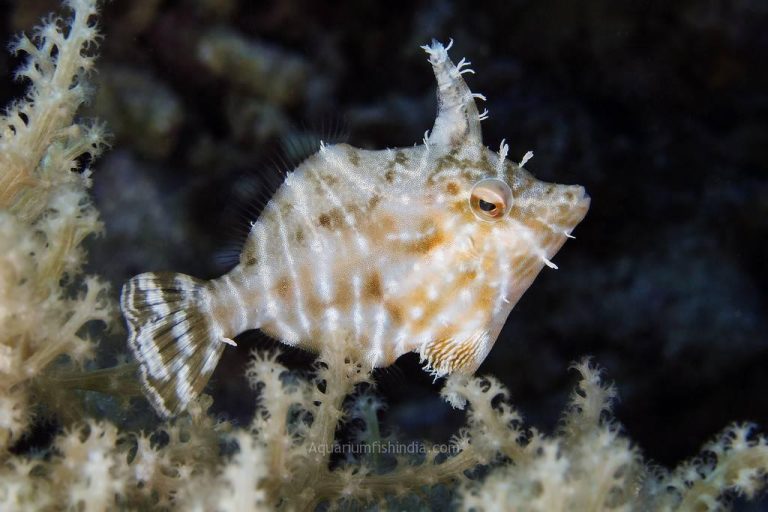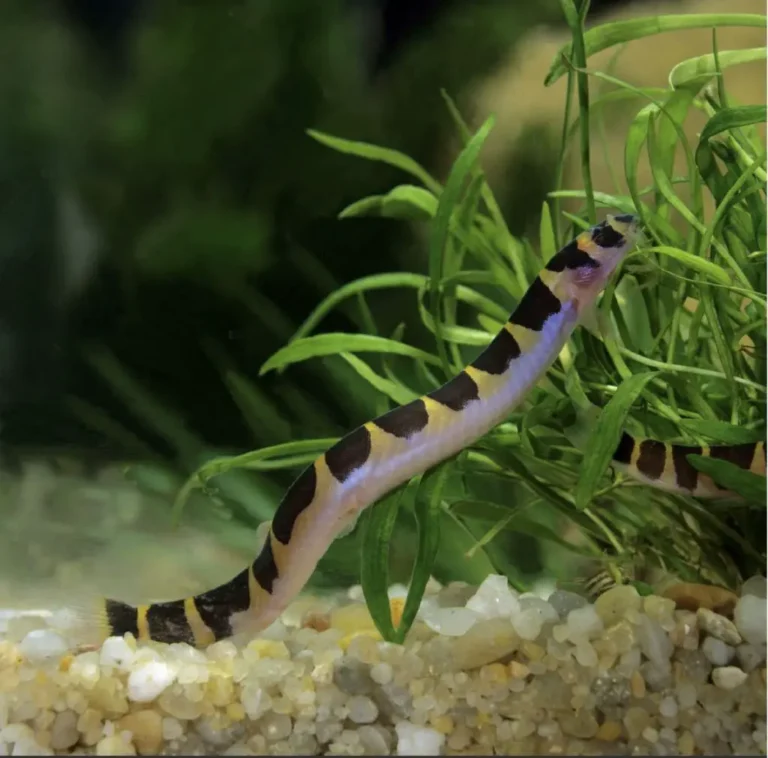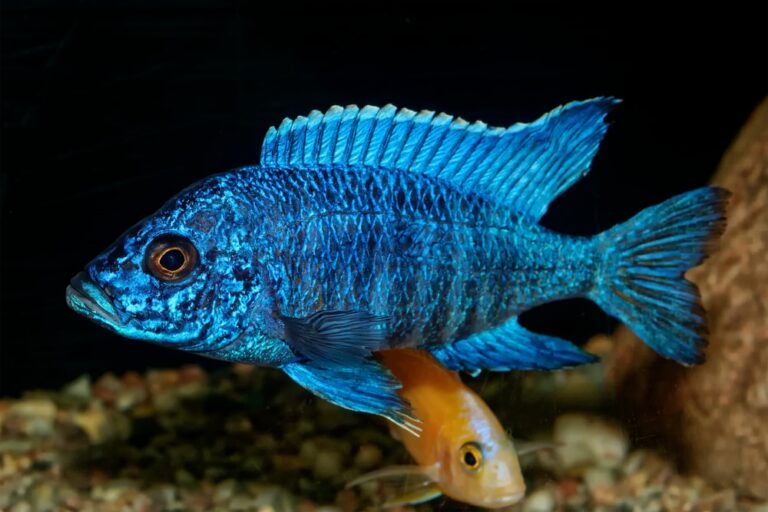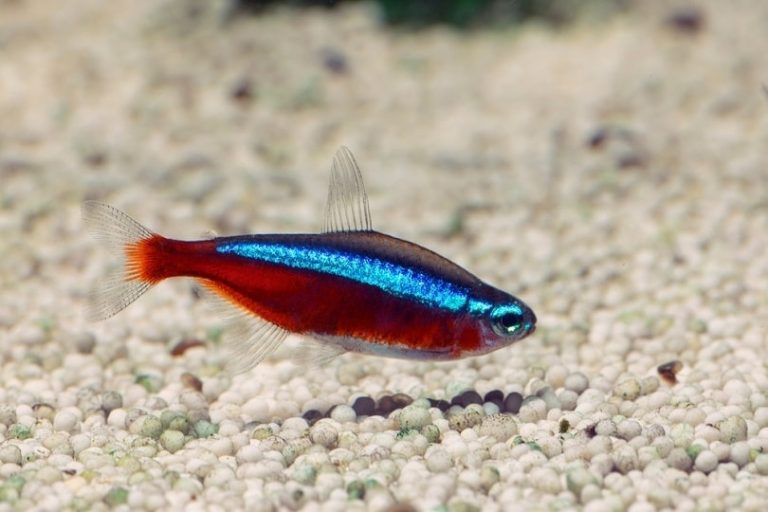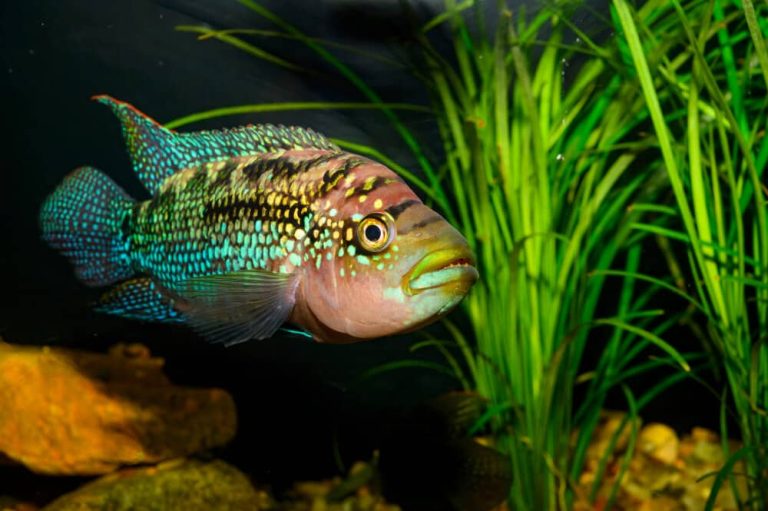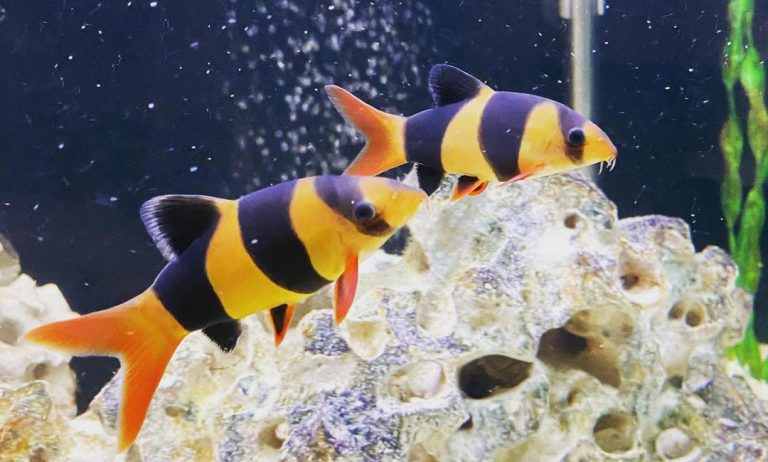What Causes Popeye in Fish? Uncovering the Common Culprits
Popeye in fish is caused by a bacterial infection. This infection leads to the accumulation of fluid in the eye of the fish, causing it to bulge out and appear swollen.
When it comes to tropical fish, one of the most common problems that owners encounter is popeye. This condition, also known as exophthalmia, is characterized by the protrusion or bulging of one or both eyes of a fish. While it can affect any type of fish, popeye is more prevalent in tropical species like cichlids and angelfish.
Apart from a bacterial infection, popeye can also happen due to poor water conditions, injuries, and stress. In this article, we will discuss in detail what causes popeye in fish, how to prevent it, and the treatment options available. So keep reading to learn more!

Credit: www.wired.com
What Causes Popeye In Fish? Uncovering The Common Culprits
Have you ever noticed your fish’s eyes protruding out of their sockets, appearing larger than usual? This condition is called “popeye,” and it’s something that fish owners should be aware of. Several factors can cause this condition, so let’s explore the various factors that contribute to popeye in fish to help you understand this disease better.
Explore The Various Factors That Contribute To Popeye In Fish
Popeye in fish can be triggered by different conditions, including bacterial infections, poor water quality, or physical injuries. Here are some of the factors that can cause popeye in fish:
- Bacterial infections: Popeye in fish is often associated with bacterial infections, especially if the infection affects the eyes. Pseudomonas and aeromonas are the two most common bacteria that cause popeye in fish.
- Poor water quality: Ammonia and nitrite accumulation in aquarium water can lead to popeye in fish. Fish excreta, leftover food, and decaying plants contribute to these harmful toxins.
- Physical injuries: Fish may develop popeye as a response to physical injury to their eye or head. Sharp objects or aggressive tank mates can cause this type of injury.
Understanding The Symptoms Of Popeye In Fish
It’s vital to identify the symptoms of popeye in fish early on to provide prompt treatment and avoid further complications. Here are some common signs of popeye in fish:
- The eyes appear bulged and swollen
- A milky or cloudy film covers the affected eye
- Loss of appetite and lethargy
- Swim bladder problems
- Discoloration or redness around the infected area
Types Of Fish More Prone To Popeye
Popeye in fish can happen to any species of fish in an aquarium, but some species are more prone to this condition than others. Here are some of the fish species that are more susceptible to popeye:
- Goldfish: Goldfish are one of the most vulnerable species to popeye. Because they have large eyes, they’re more prone to develop popeye as they age.
- Betta: Betta fish have delicate eyes, which makes them more susceptible to popeye. They are also prone to bacterial infections.
- Cichlids: Cichlids are susceptible to popeye due to their aggressive behavior. They often get injuries from fighting with other fish, leaving them vulnerable to eye infections.
How Often Does Popeye Occur In Fish?
While popeye can occur to any fish species in an aquarium, it’s relatively rare and can be prevented by maintaining a clean and healthy tank environment. However, if you do notice any of the symptoms mentioned above, it’s best to act early by following the proper treatment procedures.
By understanding the factors that cause popeye and identifying its symptoms, you can avoid further complications to your fish’s health. It’s best to consult a professional when you notice any changes in your fish’s behavior, especially if it concerns their physical state.
Remember that the key to maintaining healthy, happy fish is by keeping a clean, well-maintained aquarium.
Environmental Factors
The Role Of Poor Water Quality In Contributing To Popeye In Fish
Popeye is a common ailment that affects many fish species. It occurs when a fish’s eye becomes swollen and protrudes from its head, resembling the cartoon character popeye. While many factors can cause this condition, poor water quality is a primary contributor.
Here are some key points to consider:
- Poor water quality can arise from various sources: Overfeeding, overcrowding, and failing to maintain proper filtration systems are common causes of poor water quality.
- Inadequate filtration leads to a buildup of waste, which causes an increase in ammonia and nitrate levels in the water. This increase in toxic levels of ammonia and nitrate can damage the fish’s eye and cause it to appear swollen.
- Poor water quality can also lead to bacterial or fungal infections. These infections can cause additional symptoms such as redness or cloudiness in the affected eye.
- Maintaining proper water quality is crucial to prevent popeye and other infections. Regular checkups of water quality parameters such as ph levels, temperature, and ammonia and nitrate levels can help to identify any issues early on.
How Different Factors Of Water Quality Can Cause Popeye
It’s essential to understand that popeye is not caused by just one factor but is usually the result of several contributing factors. Water quality is a crucial factor in maintaining fish health, and poor water quality can significantly contribute to the development of the condition.
Here are some points to consider:
- High levels of ammonia and nitrate: High levels of ammonia and nitrate can be caused by overfeeding and inadequate filtration systems. It is essential to maintain the correct balance of these levels to prevent popeye.
- Poor oxygenation: Fish require enough oxygen to live and grow healthily. Inadequate oxygenation can lead to a build-up of toxins and contribute to the development of popeye.
- High ph levels: Extremely high ph levels can cause burns and irritations to fish, leading to popeye.
- High temperature levels: Extremely high temperatures can also cause a fish’s eye to protrude and appear swollen.
Impact Of Temperature And Ph Levels In Triggering Popeye
Temperature and ph levels are crucial factors in the life of a fish. Any disruption in these levels can cause considerable harm to a fish’s overall health, resulting in popeye. Here’s what you need to know:
- Ph levels: Fish require a particular ph level in their tank that suits their species. Any variation in this ph level can affect their health and lead to popeye.
- Temperature: Fish are extremely sensitive to temperature changes. Extreme temperatures, whether hot or cold, can cause popeye to occur. It is crucial to maintain a stable temperature level that is suitable for the species of fish in the tank.
Example Of Common Environmental Factors Impacting Popeye
Several environmental factors can increase the likelihood of a fish developing popeye. Some of the common environmental factors that are known to trigger popeye are:
- Overfeeding: Too much food can cause a build-up of waste, leading to poor water quality and popeye.
- Inadequate filtration: Failing to maintain or upgrading an inadequate filtration system can cause ammonia and nitrate levels to rise, leading to popeye.
- Poor water quality: Any change in water quality, whether from overfeeding, inadequate filtration, poor oxygenation or high ph levels, can cause popeye.
Overall, poor water quality is one of the primary factors that contribute to popeye in fish. Proper tank maintenance, regular checkups of water quality parameters, and adequate filtration systems are crucial in preventing this condition from occurring.
Bacterial Infections
Understanding Bacterial Infections In Fish
Bacterial infections are a common cause of popeye in fish. These infections can affect the fish’s immune system, leaving them susceptible to several health issues, including popeye. Understanding the underlying causes of bacterial infections is crucial for preventing the condition.
Common Types Of Bacterial Infections That Cause Popeye
Identifying the common types of bacterial infections that cause popeye is essential for prompt diagnosis and effective treatment. Here are some of the most prevalent bacterial infections that cause popeye:
- Aeromonas hydrophila: This bacteria leads to severe tissue damage and is one of the most common causes of popeye in fish.
- Pseudomonas fluorescens: This bacteria is found in many aquariums, particularly in those with high levels of organic waste.
- Vibrio: Vibrio bacteria thrive in warm, salty, and brackish waters and are known to infect fish.
How Bacterial Infections Can Affect Other Parts Of The Fish
Bacterial infections can affect different parts of the fish, including their skin, fins, and internal organs. If left untreated, bacterial infections can lead to more severe health issues that can be fatal to fish. Here are some examples of how bacterial infections can affect other parts of the fish’s body:
- Septicemia: This is a severe bacterial infection in which harmful bacteria spread into the fish’s bloodstream, leading to multiple organ failure.
- Fin rot: This bacterial infection causes the rotting of the fish’s fins, making it easier for more bacteria to enter the fish’s body.
- Ulcers: Ulcers are open sores that can form on the fish’s skin or gills due to a bacterial infection.
Example Of Common Bacterial Infection-Causing Popeye
Aeromonas hydrophila is one of the most common bacterial infections that cause popeye in fish. Aeromonas hydrophila bacteria are found in most freshwater aquariums and can lead to severe tissue damage in fish. The bacteria can enter the fish’s body through small wounds or openings on the skin, leading to swelling of the eyes and other health issues such as septicemia and ulcers.
Prompt diagnosis and treatment with antibiotics can help prevent the disease from spreading and reduce the risk of complications.
Parasites And Fungal Infections
Popeye is a common ailment that affects fish. It’s a condition that occurs when a fish’s eye protrudes from its socket. In this blog post, we will be exploring the causes of popeye in fish with a focus on parasites and fungal infections.
Introduction To Parasites And Fungal Infections In Fish
Parasites and fungal infections are a common cause of popeye in fish. Here are some of the most common types of parasites and fungi that cause popeye:
Types Of Parasites And Fungi Causing Popeye
- Flukes: Flukes are a type of parasite that can cause popeye in fish. They are small, flatworm-like creatures that live on the surface of the fish’s skin, fins, and gills. If left untreated, flukes can cause serious damage to the fish’s body.
- Ich: Ich is another type of parasite that can cause popeye in fish. It’s a small, single-celled organism that attaches itself to the fish’s skin and gills. Ich can be easily treated with medication, but if left untreated, it can cause serious harm to the fish.
- Columnaris: Columnaris is a bacterial infection that can cause popeye in fish. It’s a common disease in aquariums and is caused by the bacteria flavobacterium columnare. Treatment for columnaris usually involves the use of antibiotics.
How To Prevent And Treat Parasites And Fungi Effectively
Preventing parasites and fungal infections is important to keep your fish healthy. Here are some steps you can take to prevent and treat parasites and fungi effectively:
- Maintain good water quality: Clean water is essential for preventing and treating parasites and fungal infections. Regular water changes and tank maintenance can help ensure the aquarium environment is healthy.
- Quarantine new fish: New fish should be quarantined for at least two weeks before adding them to the main aquarium to prevent the introduction of parasites and infections.
- Use medication: If your fish are already infected with parasites or fungal infections, medication can be used to treat them effectively. It’s essential to follow the instructions on any medication used and to give the correct dosage based on the size of the aquarium and the number of fish.
Parasites and fungal infections are common causes of popeye in fish. Preventative measures can be taken to keep fish healthy, and treatment for parasites and infections is effective with medication. By following these tips, you can keep your fish healthy and happy.
Genetics And Other Causes
Understanding The Genetic Predisposition To Popeye In Fish
Popeye is a common problem in aquarium fish, and it is often a sign of underlying health issues. While there are several factors that contribute to popeye in fish, genetics are one of the most significant factors. Here are some key points to help you understand the role of genetics in popeye in fish:
- Some fish species are more susceptible to developing popeye due to genetic factors.
- In some cases, individual fish within a species may be more or less prone to developing popeye based on their genetic makeup.
- Inherited genetic mutations can cause structural abnormalities in the fish’s eye or the surrounding tissue, leading to a higher risk of popeye.
Genetics may determine a fish’s predisposition to popeye, but there are other rare causes of the condition.
Other Rare Causes Of Popeye In Fish
While genetics is the most common cause of popeye in fish, other rare factors can also contribute to the condition. Here are some key points that you should know:
- Environmental factors, such as poor water quality or oxygen deprivation, can cause popeye in fish.
- Infections, parasite infestations, or injuries can also lead to popeye.
- Some medications can cause an adverse reaction in fish, resulting in popeye.
Ensuring that the fish tank environment is healthy and clean can help prevent popeye in fish. However, breeders and fish enthusiasts can also take additional steps to prevent the condition.
Genetic Testing And Preventive Measures
To prevent popeye in fish, breeders and fish enthusiasts can take measures such as genetic testing or careful monitoring to limit exposure to environmental factors. Here are some key points to consider:
- Genetic testing can help identify fish that are more susceptible to popeye so that breeders can avoid breeding such individuals.
- Regular water changes and proper filtration can help maintain healthy water quality and prevent environmental causes of popeye.
- Proper nutrition, quarantine measures, and avoiding overcrowding in the fish tank can also reduce the risk of popeye.
By taking proactive measures to prevent popeye, breeders and fish enthusiasts can ensure that their fish remain healthy and vibrant. With a deeper understanding of the genetic and environmental factors that contribute to popeye, fish enthusiasts can take measures to prevent the condition and enjoy their fish for years to come.
Frequently Asked Questions On What Causes Popeye In Fish
What Is Popeye In Fish?
Popeye in fish is a bacterial infection that causes one or both eyes to bulge.
What Causes Popeye In Fish?
Popeye in fish is caused by bacteria and poor water conditions in the fish tank.
How Do You Treat Popeye In Fish?
Treatment for popeye in fish involves improving water quality, antibiotics, and isolation.
How Can You Prevent Popeye In Fish?
You can prevent popeye in fish by maintaining good water conditions, preventing overcrowding, and avoiding overfeeding.
Conclusion
It’s certainly not a pleasing sight to see your beloved fish with pop-eye disease, but it’s not something completely preventable. As we’ve seen, there are various factors that cause this disease- from poor water quality to infections caused by parasites or bacteria.
Therefore, it’s crucial to maintain a clean living environment for your fish and maintain safe hygiene protocols while handling them. In case of acute infection, seek professional advice promptly, and never delay medication. Prevention is better than cure when it comes to pop-eye disease in fish, and it can be avoided considerably by providing a healthy lifestyle environment to your fish.
Diligent attention to the hygiene and environment of your fish can significantly reduce the incidence of pop-eye disease. So, let’s take an oath to keep our fish healthy and provide them with a stress-free life.

